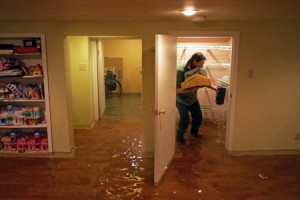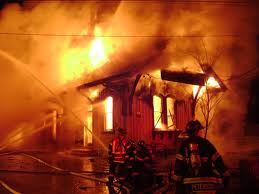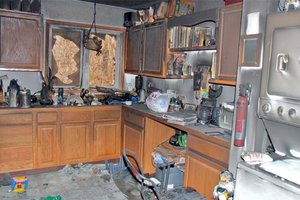McKinney Roofing – Wind Damage, Part 4
McKinney Roofing – Wind Damage, Part 4
by Kenton Shepard and Nick Gromicko
MITIGATING FACTORS
Some variables, such as air density and the pattern of wind gusts, are aspects of wind damage that you won’t know about before you arrive at the inspection, and won’t be able to see once you’re there. But they can have a significant effect on the nature of the damage.
Let’s examine the role these variables play in creating wind damage. The bottom line is whether or not the damage is consistent with damage actually caused by wind.
Some basic mitigating factors include the following.
Wind Speed
As previously mentioned, wind speed is related to the roof height above the ground, with speeds slowing closer to the ground. This image shows the wind blowing at 100 miles per hour at a height of 33 feet. At 5 feet above the ground, the wind speed is 66 miles per hour — a loss of almost half the speed in only 25 feet.
The speed of the wind as it passes over the roof can be more than 2½ times the approach speed. The approach speed is the speed of the wind as it approaches the building.
Since higher wind speed can increase uplift, higher speeds increase the chances for damage.
Pattern of Gusts
As a storm moves into an area, wind may increase in speed at a relatively constant rate, or this growth may include strong gusts. During wind gusts, wind speed may increase dramatically in just a few seconds. This has a physical effect similar to an impact. Strong, sudden gusts may do more damage than winds of higher speeds which build and fade at a more gradual rate.
Air Density
Air density is affected by temperature. Cool air is denser than warm air. This means that if cool air and warm air are blowing at the same speed, cool, denser air will place a greater wind load on the building. A greater wind load has the potential to do more damage.
Wind Direction
Determining the direction from which damage-causing winds originated may help you recognize where to look for damage.
The orientation of damaged surfaces and displaced debris may provide clues.
- Look at the pattern of damage. Knowing how wind damage is created should help you determine the direction from which the wind was blowing.
- Look for distorted or displaced claddings, such as siding and trim. Damage should be more severe on the side of the home exposed to the most intense winds.
- Look for debris at the downwind side of the yard.
- Many areas have predictable wind patterns. Strong coastal winds often blow in from the ocean toward the shore. Homes located near features such as the mouths of canyons can have wind directed at them.
No need to struggle deciding which repairs you will make to your McKinney Roofing Damage- you have enough to think about. Your insurance will cover the cost of your McKinney roofing repairs. We are the McKinney roofing company that knows the complete ins and outs of what needs to be done to completely take care of your McKinney roofing repair At Go Go Green Roofing and Solar we will take care of the whole insurance process for you. Call us today at (682) 325-2682 for your free evaluation.





